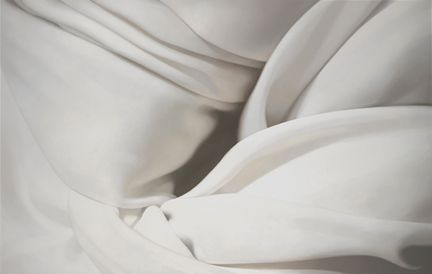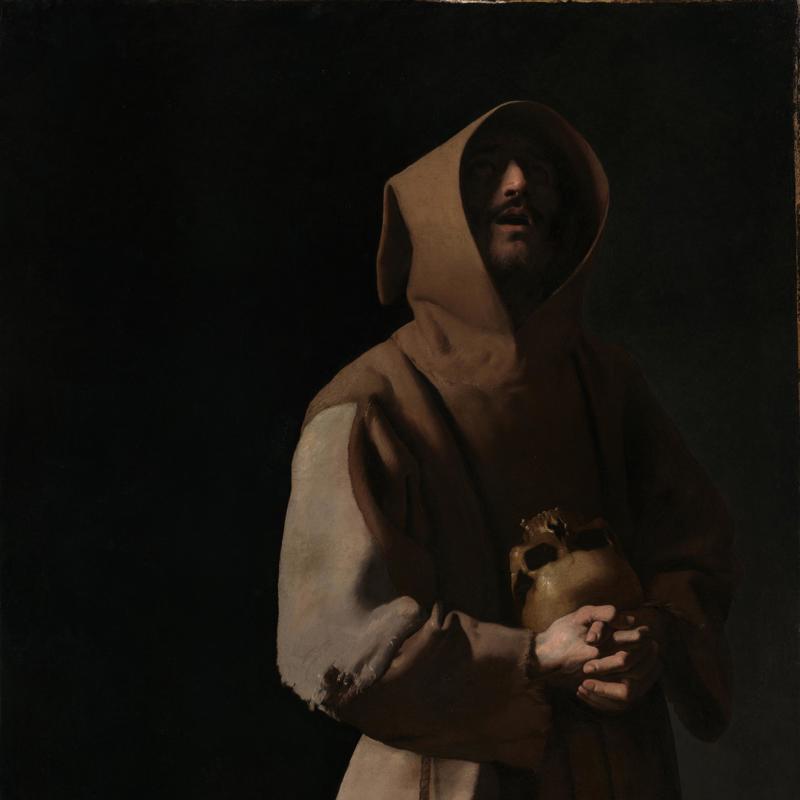
© The National Gallery, London.
Courtesy the Artist / Ingleby Gallery, Edinburgh.
Issued January 2008
Sunley Room
12 March - 22 June 2008
Admission free
Alison Watt is the seventh National Gallery Associate Artist and the youngest in the scheme’s history. This exhibition marks the end of her two year period at the National Gallery and is comprised of six large scale works which were inspired by works from the Gallery’s permanent collection.
By the early 2000s, Watt had established a reputation as a painter of material and the work in this exhibition demonstrates a deep fascination with the possibilities of the suggestive power of fabric.
Watt began her time at the National Gallery by surrounding herself with key visual influences in the form of reproductions pinned to her studio wall, from the material sensuousness of Ingres to the earthy reality of Courbet. She then embarked on a series of powerful, large-scale paintings.
The canvases in this exhibition appear at first to be overwhelmingly white but this sensation is arrived at with a surprisingly varied palette that includes grey, burnt sienna, cadmium red and yellow. She chooses titles for her works during their creation, or shortly after, selecting words with an ambiguity that allow spectators to find their own interpretations.
Two of the works, 'Pulse' and 'Echo', feature a large knotted form, possessing a sense of weighty physicality that seems to push the folds of fabric into the spectator’s own space. There is an aggressive thrust to these pictures, offset by the little open folds that suggest an entrance. The notion of a point of entry becomes the dominant theme in the rest of the series, but in these first two paintings it is the forceful and physical property of the knots that give the works their character.
'Host' seems to be losing its connection with fabric and pushes its representational qualities about as far as they can go before shifting into abstraction. The appearance of a dramatic movement away from, rather than into the very pronounced centre of the painting it gives the painting an expansiveness, implying a continuation beyond the picture’s edge. The completion of 'Host' reflects Watt’s deepening interest in Zurbarán’s Saint Francis in Meditation, which was perhaps the work that Watt drew most inspiration from during her time at the National Gallery.
The effect upon her work of those sculptural folds by Zurbarán can be seen in the paintings 'Phantom', 'Vowel' and 'Root'. Both 'Root' and 'Vowel' are indicative of how Watt’s work made at the National Gallery has been moving away from the painting of matter towards something less definitive.
The beautifully designed exhibition catalogue (£12.95) that accompanies the show also debuts a powerful new work by Scottish poet Don Paterson, recipient of both the Whitbread and T.S. Eliot Prizes for Poetry, which was composed in response to viewing both Watt’s work and the works influencing it. Published by the National Gallery Company and distributed by Yale University Press, the catalogue has been generously supported by Bank of Scotland Private Banking.
The Rootstein Hopkins Foundation Associate Artist Scheme enables leading contemporary artists to work with the National Gallery’s permanent collection of pre-1900 Western European art. The appointment is for a period of two years during which the artist is given a studio in which to make new work that in some way connects to the National Gallery Collection; thereby demonstrating the continuing inspiration of the Old Master tradition on today's artists.
Alison Watt: Phantom opens on 12 March 2008
For further press information please contact:
Ken Hunt on 020 7747 2532 / ken.hunt@ng-london.org.uk

